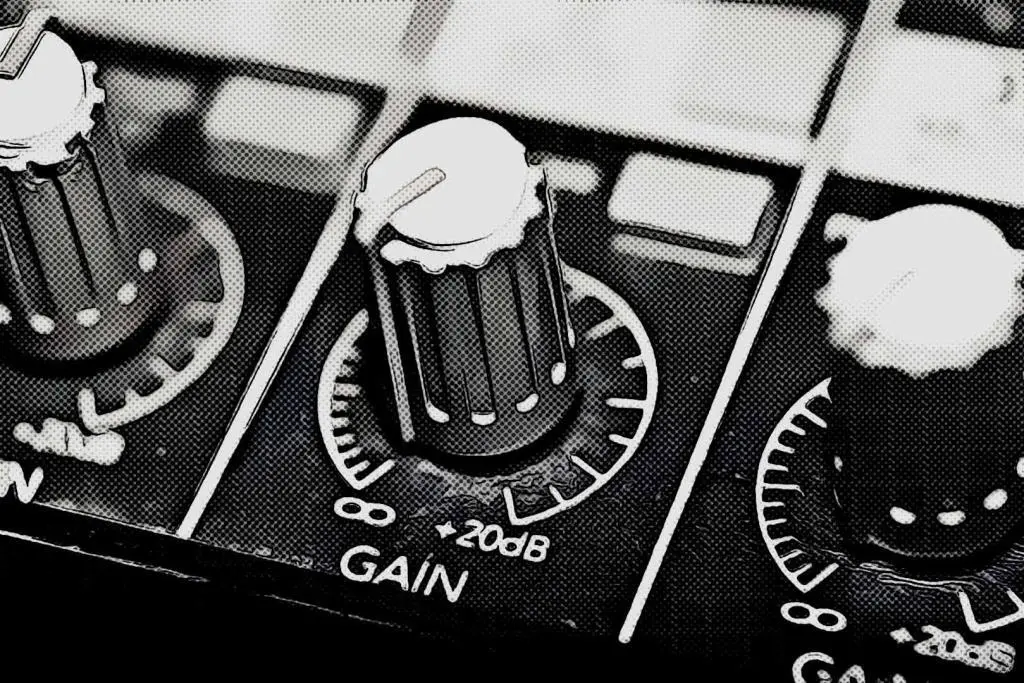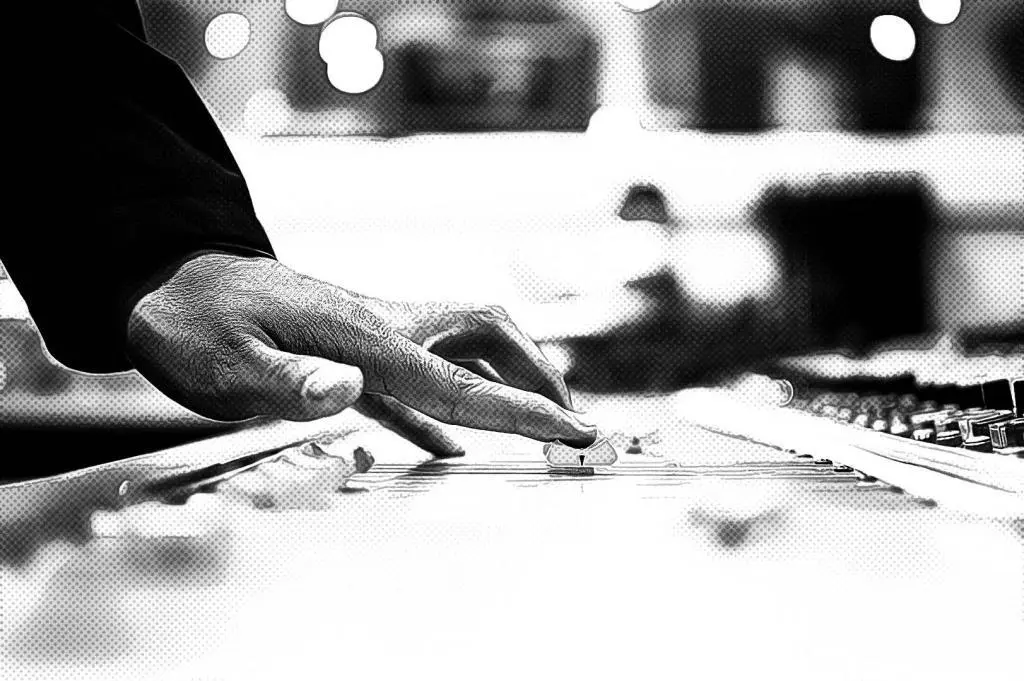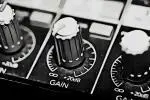In music production, “gain” refers to the amount of amplification applied to an audio signal or input, measured in decibels (dB). It is utilized to increase the signal level so that it can be processed and recorded without distortion. On a mixing console, audio interface, or in software, gain can be adjusted to ensure that the signal is at the optimal level for recording or mixing.
Thus, gain refers to the amplification of an audio stream and is an important part of music production. But what is gain, what does it do, and how is it measured? In this article, we’ll look into these topics and try to comprehend the terms gain, volume, and level. We’ll also look at the differences between gain, volume, and level, as well as gain staging and its importance in the music production process. This article will provide you a better knowledge of gain and its use in music production, regardless of your level of audio engineering experience.

Table of Contents
What is gain? What does gain do?
Gain is an fundamental concept in music production an an essential element of the recording process because setting it corectly or incorectly, directly affects the final product’s quality. It is used to adjust the level of an audio signal in the first stage of production, as well as to modify the tone and character of a sound. It can also be used to adjust the background noise or “noise floor” in a recording.
Setting the gain correctly is crucial to achieve optimal sound quality. Setting the gain too high can result in distortion, which can make audio sound harsh and unpleasant. In contrast, setting the gain too low can result in a weak or quiet audio signal that can affect the next stages of production. Additionally, when the gain is set too low, it can increase the level of background noise or “noise floor” in the recording, as the signal-to-noise ratio is decreased.
How do you measure gain?
Measuring gain in audio production involves determining the level of amplification applied to an audio signal or input. One way to measure gain is by using a level meter, which can be found on a variety of devices and software used in music production such as a mixing console, audio interface, or a digital audio workstation (DAW).
The level meter displays the level of the audio signal in decibels (dB), which is a logarithmic unit of measurement commonly used to express the ratio of two values of power, voltage or current. By comparing the level of the audio signal before and after the gain is applied, and calculating the difference in decibels, you can determine the amount of gain applied to the audio signal.
What is the Difference Between Gain and Volume and Level?
Gain, volume and level are all related terms that refer to the amplitude or loudness of an audio signal, but they are not interchangeable.
Each of these terms has a specific meaning and understanding them is important. Gain refers to the amount of amplification applied to an audio signal. Volume, on the other hand, refers to the perceived loudness of a sound, as perceived by the listener. This can differ from the actual level of the sound because of the way humans perceive sound. Lastly, level refers to the relative balance of audio signals or tracks in a session, “measured” in Peak and RMS. Peak level refers to the loudest single moment in a signal, whereas RMS refers to the average intensity over a period of time. A level meter is often used to measure the level of an audio signal and it can be used to monitor the level of an audio signal throughout the recording, mixing, and mastering process.
Understanding the difference between these terms can help you produce better audio recordings and mixes.
So, shortly put, GAIN is a measure of how loud the channel’s or amp’s INPUT is. Not loudness, but tone, is controlled. VOLUME refers to how loud the channel’s or amp’s OUTPUT is. It regulates loudness but not tone. Level can include both the gain and the volume of an audio signal and describes the amplitude or loudness of the audio signal.
If it is simpler to understand and look at things from a different angle, Gain is the superhero of amplification, making weak signals strong and powerful. Volume, on the other hand, is the sidekick of loudness, it’s the “ear-drum-a-thon” in your head. And lastly, level is the wise old wizard of balance, it’s the Gandalf of audio production.

What is Gain Staging?
Gain staging is a technique used in music production to control the relative volumes of each step in an audio signal flow and avoid noise and distortion. The best possible sound for your recording depends on each component in the signal flow receiving and transmitting signals in the optimal region of their dynamic range, which is ensured by this procedure.
Gain stages are points in the signal chain where volume adjustments can be made, such as on a mixing console or digital audio workstation (DAW). Before the signal is sent to the next processor in the chain, these modifications are applied to reduce noise and distortion.
It’s important to remember that the “optimal” level is where the signal is loud enough to be heard over the background noise of the recording but not so loud that it causes distortion as soon as it gets to the next processor in the chain.
In most cases, the microphone preamplifier is the first electronically programmable gain stage in a signal stream that begins with an acoustic sound source. The Inverse-Square Law, which states that as the distance between the sound source and the microphone increases, sound intensity decreases, applies to the sound source. Moving the microphone nearer to the sound source increases the signal level it creates, whereas moving the microphone away from the sources of unwanted noise decreases the noise in the signal. The placement of the microphone is essential for gain staging.
In rare instances, the microphone preamplifier can boost the signal by as much as 95 dB. After passing through the microphone preamplifier, the audio signal has been amplified to line level and is now ready to be processed by a device that can carry a line-level signal.
When there are both microphones and speakers in an audio system, the overall sum of gain can be more than 100 dB. Before the signal gets to the loudspeaker, this is usually done in a number of smaller steps, named gain stages, where the signal is amplified or turned down as needed.
Gain staging has been set up in analog and digital environments in different ways in the past. In the analog world, gain staging is often done by changing the levels of individual parts, like preamplifiers or mixing consoles. Gain staging is often done in the digital world by changing the levels in a DAW using tools like faders and meters.
The same principles hold true regardless of the situation: adjusting the audio signal’s volume at each link in the signal chain to achieve the best result.

